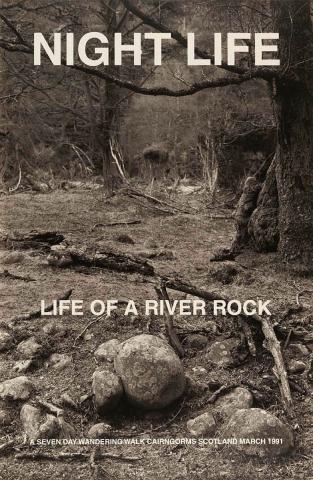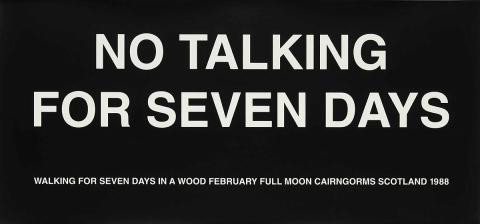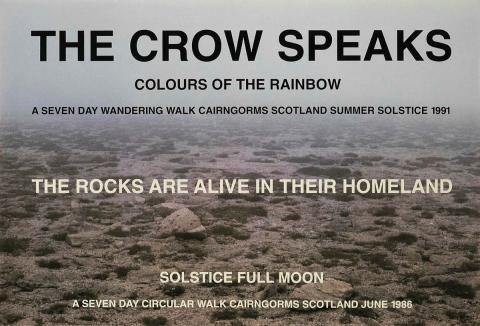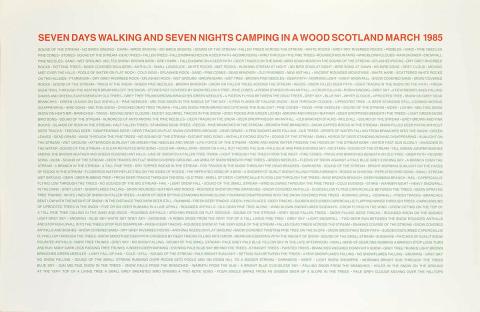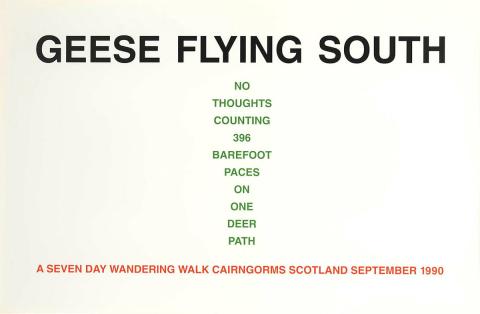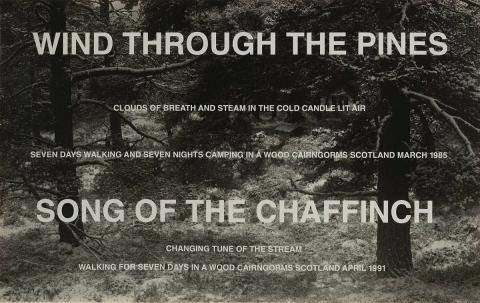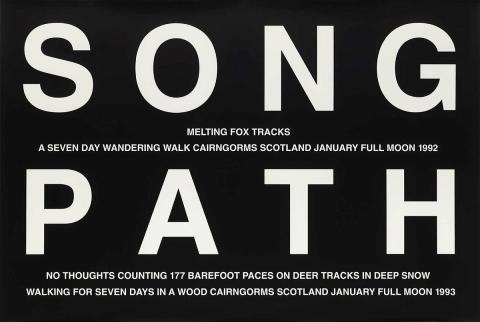Hamish Fulton: ‘Ten toes towards the rainbow’
By Peter McKay
February 2017
Hamish Fulton sees himself as a ‘walking artist’. He often returns to specific parts of the Scottish Highlands to observe seasonal changes and deepen his familiarity with their finer details. The series ‘Ten toes towards the rainbow’ combines text and photography — both long-standing elements of his practice — to conjure something of his experiences.
Within his practice, Fulton also questions art’s ability to encapsulate the experience of traversing through unique natural environments. He has said that his works are cultural interpretations of his experiences, and while the works foster a greater appreciation of the natural world, the audience must do their own leg work to have the real experience.
Connected objects
Related artists
FULTON, Hamish
1946
- present
Full profile
for FULTON, Hamish
Metadata, copyright and sharing information
About this story
- Subject
